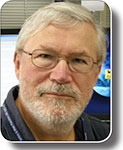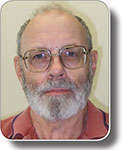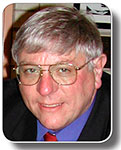The Permian–Triassic boundary in Western Australia: evidence from the Bonaparte and Northern Perth basins—exploration implications
John Gorter A , Robert S Nicoll B , Ian Metcalfe C , Robbert Willink D and Darren Ferdinando EA Eni Australia
B Geoscience Australia
C University of New England School of Environmental and Rural Science
D Origin Energy
E Murphy Australia Oil
The APPEA Journal 49(1) 311-336 https://doi.org/10.1071/AJ08020
Published: 2009
Abstract
Several sedimentary basins in Western Australia contain petroleum reservoirs of Late Permian or older age that are overlain by thick shaly sequences (400–2,000 m) that have been assigned an Early Triassic age. The age of the base of the Triassic shales has been, and continues to be, contentious with strata being variously ascribed to the latest Permian (Changhsingian Stage) or wholly in the earliest Triassic (Induan Stage). In the Perth Basin the Permian-Triassic boundary appears to be located somewhere in the Hovea Member of the Kockatea Shale. In the Bonaparte Basin, the boundary would appear to be either in the uppermost Penguin Formation or at the boundary between the Penguin and Mairmull formations.
The uncertainty of the boundary placement relates to the interpretation of the sedimentological, biostratigraphic and geochemical record in individual sections and basins. Major problems relate to the recognition, or even the presence of unconformities, complications related to the presence of reworked sediments and paleontological material (both conodonts and spore-pollen) and to the significance of geochemical shifts.
The age of the basal Kockatea Shale (northern Perth Basin) and the basal Mt Goodwin Sub-group (Bonaparte Basin) is reassessed using palaeontological data, augmented by carbon isotopic measurements and geochemical analyses, supported by wireline log correlations and seismic profiles. The stratigraphy of the latest Permian to Early Triassic succession in the Bonaparte Basin is also revised, as is the nomenclature for the Early Triassic Arranoo Member of the Kockatea Shale in the northern Perth Basin. The Mt Goodwin Sub-group (new rank) is composed of the latest Permian Penguin Formation overlain by the Early Triassic Mairmull, Ascalon and Fishburn formations (all new).

John Gorter is the new ventures manager for Eni Australia where he has been employed since 1992 (previously Hardy Petroleum and British Borneo). He graduated from the Australian National University in 1972 with a BSc (Hons), and was awarded a PhD from the University of New South Wales in 1992. After six years with the BMR (petroleum branch) he joined Esso Australia in 1978 and subsequently worked since 1980 with the petroleum exploration industry with various local and international companies, mainly on Australian basins. Member: PESA, AAPG, GSA John.Laurie@ga.gov.au |

Robert (Bob) Nicoll was educated in the USA and obtained his PhD from the University of Iowa in 1971. He worked for the Bureau of Mineral Resources/ Australian Geological Survey Organisation for 28 years and is a school visitor in the Research School of Earth Sciences of the Australian National University and is contracted to Geoscience Australia developing the Australian datapack for Time Scale Creator. His principal research interest involves all aspects of conodont biostratigraphy and palaeobiology from the Cambrian to the Triassic. Bob.Nicoll@ga.gov.au |

Ian Metcalfe obtained a BSc (Hons) in geology from Durham University, U.K. in 1971 and a PhD (conodont biostratigraphy) from Leeds University, U.K. in 1976. His academic career began as lecturer at the University of Malaya, Kuala Lumpur, Malaysia in 1977 where he taught palaeontology, micropalaeontology and petroleum geology and supervised postgraduates at the Institute of Advanced Studies working on petroleum geology projects in the Malay Basin and in Sabah and Sarawak. He has subsequently held academic positions as senior lecturer, associate professor and professor at the National University of Malaysia and University of New England, Australia. He was science coordinator for the International Ocean Drilling Program (OD P), Australian secretariat (1992–5) and secretary of the IUGS Subcommision on Carboniferous Stratigraphy (1996–2000). His research has largely centred on East and Southeast Asia and he was co-leader of IGCP Projects 321, Gondwana dispersion & Asian accretion (1991–6) and 411, Geodynamics of Gondwanalandderived terranes in East and South Asia (1998–2002). He was Deputy Director of the UNE Asia Centre from 2001–8 and is editor of the Journal of Asian Earth Sciences. His international reputation is for the Palaeozoic and Mesozoic tectonic framework, evolution and palaeogeography of East and Southeast Asia (eastern Gondwana and the Tethys ocean basins), and for studies of the Permian Triassic boundary and end-Permian mass extinction in China and, more recently, in Australia. imetcal2@une.edu.au |

Robbert Willink commenced his career as a petroleum geologist with Shell in 1978 after graduating with a BSc (Hons) from the University of Tasmania and a PhD in geology from the Australian National University. After nine years with Shell that included international postings to the Sultanate of Oman and Turkey, he took up a lectureship in petroleum geology at the National Centre for Petroleum Geology and Geophysics in Adelaide. In 1988 he returned to industry to join Sagasco Resources Limited as exploration manager. In time, Sagasco was taken over by Boral which spun off Origin Energy Limited in 2000 as a separately listed entity on the ASX. Rob holds the position of executive general manager, Geoscience and Exploration New Ventures. Origin’s upstream portfolio of assets includes conventional exploration and production interests in the Cooper/ Eromanga, Bowen/Surat, Perth, Otway and Bass basins in Australia and in the Taranaki Basin in New Zealand, frontier exploration interests in the Northland and Canterbury basins, offshore New Zealand, in the Lamu Basin, offshore Kenya and in the Song Hong Basin, offshore Vietnam. In addition, the company holds vast coal seam gas reserves in Queensland that it is currently developing in conjunction with ConocoPhillips. Rob.Willink@originenergy.com.au |

Darren Ferdinando attended the University of Western Australia where he completed a BSc (Hons) in Geology in 1989 and later a PhD in 2004. He started his career as a geoscientist working for the Geological Survey of Western Australia and has since worked as a research geologist in DMP’s Petroleum Division and as a senior geologist with ARC Energy working on their Perth Basin assets. In late 2008 he joined Murphy Australia Oil as a senior staff geologist finding exploration opportunities in the Browse and Bonaparte basins. Member: PESA, AAPG, FESWA, ASEG and SEG. Darren_Ferdinando@murphyoilcorp.com |


